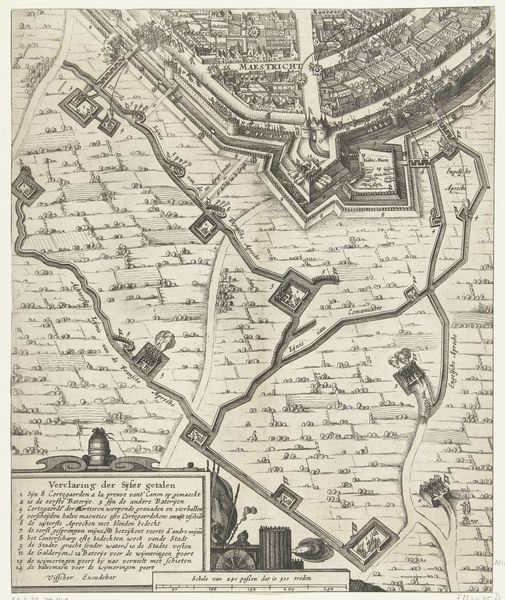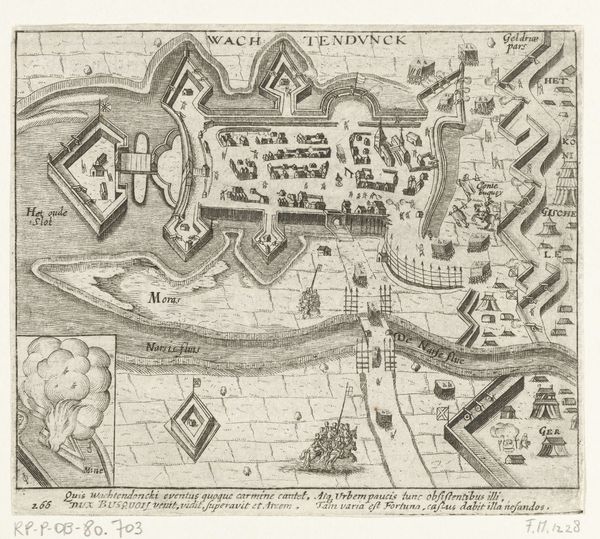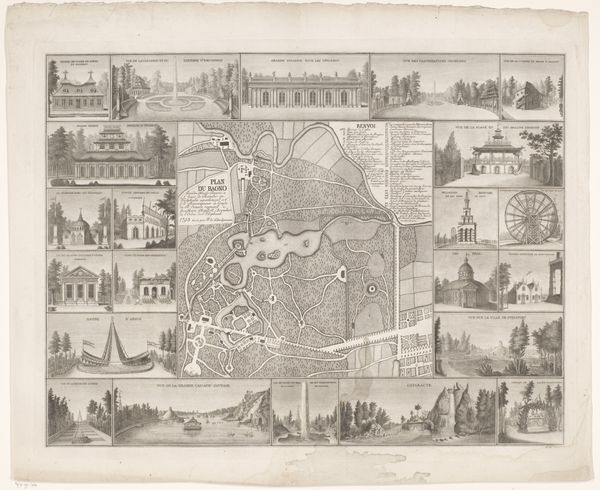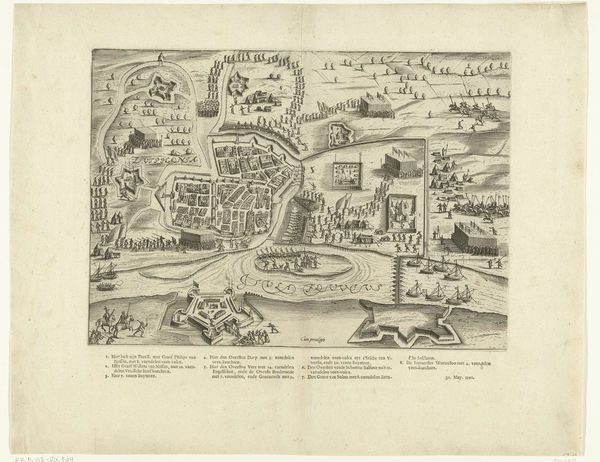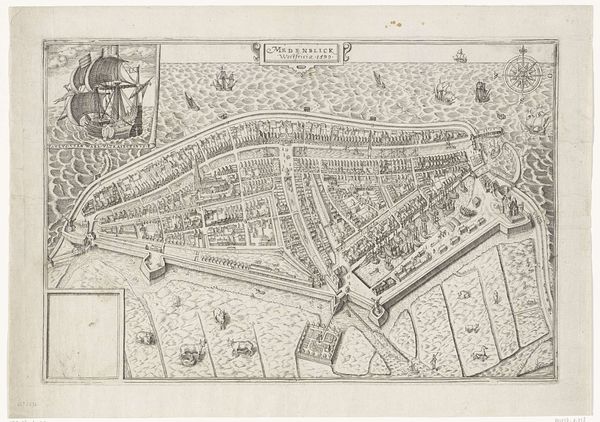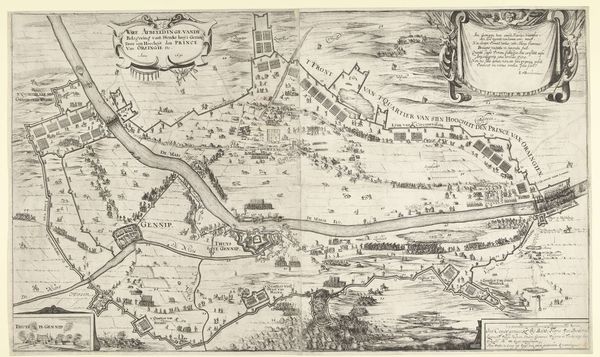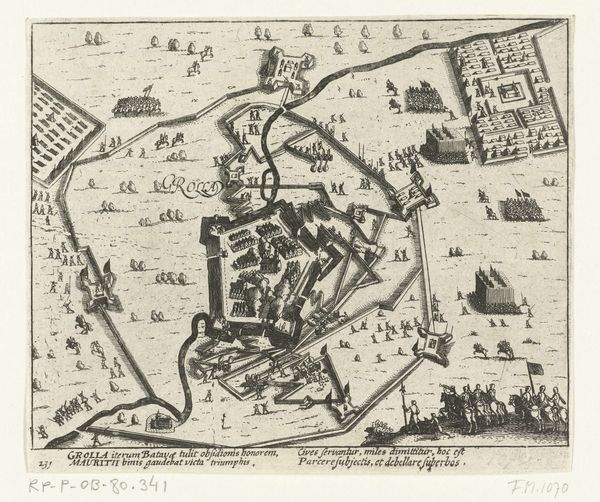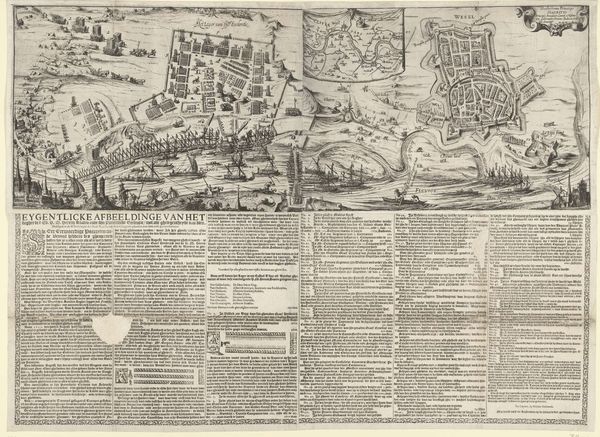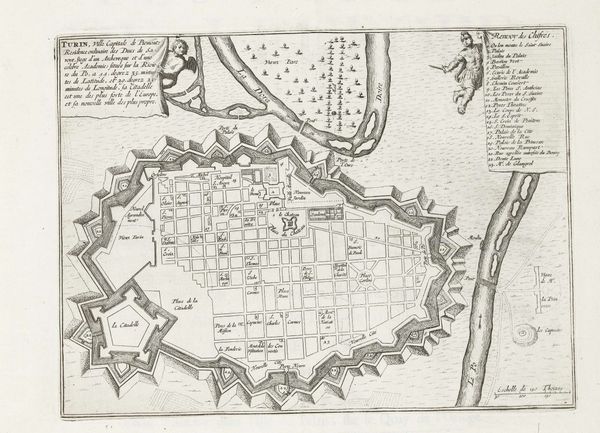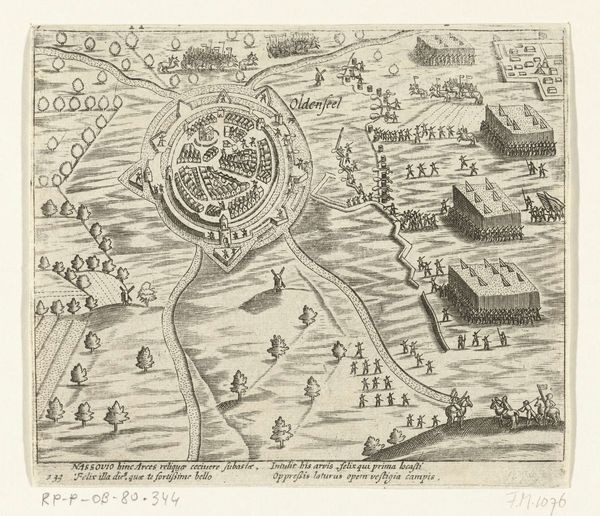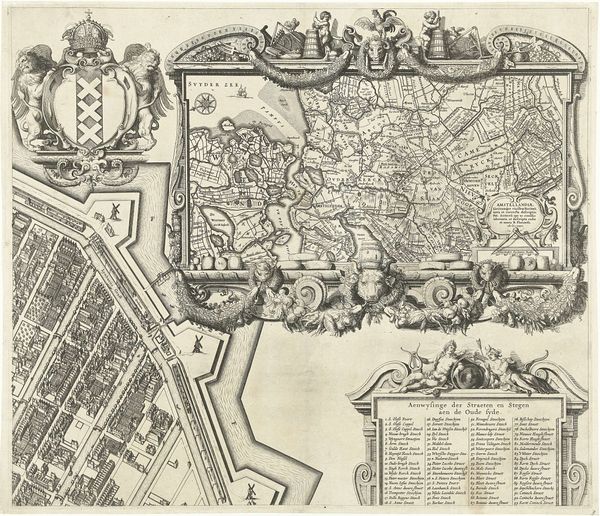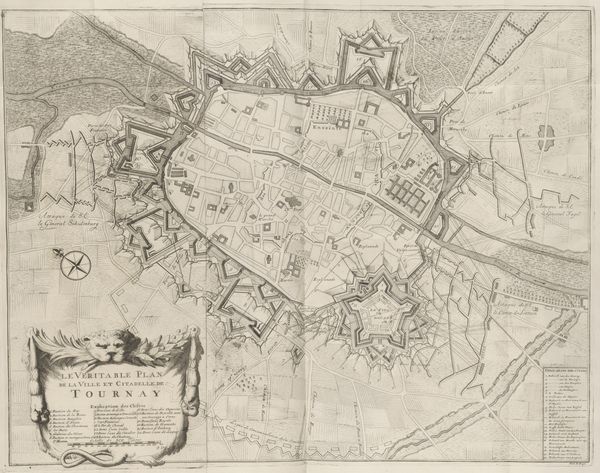
print, engraving, architecture
#
narrative-art
#
baroque
# print
#
geometric
#
line
#
cityscape
#
history-painting
#
engraving
#
architecture
Dimensions: height 398 mm, width 530 mm
Copyright: Rijks Museum: Open Domain
Curator: This engraving, “Verkiezing van een Paus en plattegrond van het Vaticaan,” created between 1688 and 1705 by an anonymous artist, offers a fascinating glimpse into the spectacle of a papal election. It’s currently held in the collection of the Rijksmuseum. Editor: Wow, it feels like peering through a meticulously crafted keyhole into another world. The sheer density of the linework! It's overwhelming and beautiful at the same time. What exactly are we looking at? Curator: Primarily, we’re observing the process, spatial dynamics, and inherent power structures of electing a Pope. The print combines architectural plans of the Vatican with vignettes of the election process itself, alongside symbolic elements meant to elevate the proceedings. You can observe how meticulously planned events blend seamlessly. Editor: Planned, indeed! All of those little figures are like actors on an immense stage. It's strangely theatrical for something so...spiritual, perhaps? But seeing the map alongside the ritual somehow demystifies it a bit. Is this a kind of commentary? Curator: In a way, yes. The architectural details juxtaposed with the ceremonial scenes underscore the materiality and organizational effort behind the papal election. It reveals how the Church uses both spiritual symbolism and practical logistics to wield power and influence through very precise and well defined processes. Editor: It makes you think about what we choose to monumentalize and how. These angels framing the scenes—they feel less like divine messengers and more like ornate props in a very calculated production. I find it interesting that anonymous artist would devote themselves to depict an even they had probably very little interaction with. Curator: Precisely. The artist’s labor in creating this engraving is itself a form of participation in this production, amplifying its image through reproducible media like prints. That the author is anonymoys raises all kind of questions: who did they work for? and, what impact this print made within the political discourse of the time. Editor: Absolutely. I get the sense that in making a complex political event tangible this work served as a powerful communication instrument that we should read beyond it's decorative intentions. Thank you for unraveling the complex layers of this scene, it certainly has something to teach about our ways of understanding how knowledge can be so powerful! Curator: My pleasure! It's through careful consideration of details that a greater narrative can come to light and that we can acknowledge that any artistic gesture represents in itself the culmination of very concrete working and production relationships.
Comments
No comments
Be the first to comment and join the conversation on the ultimate creative platform.

